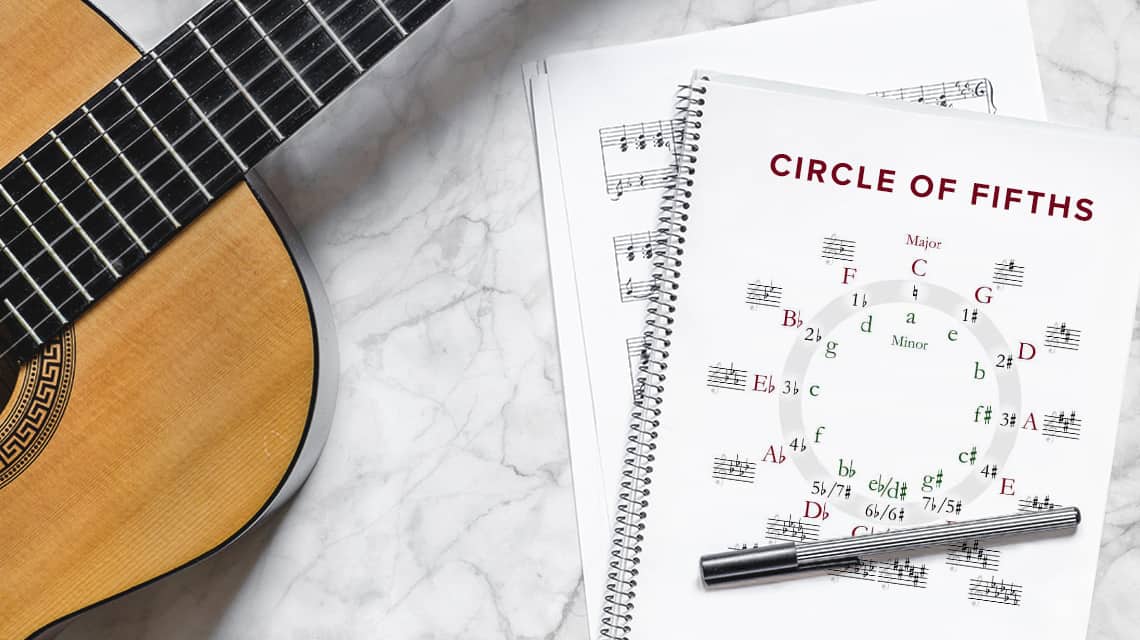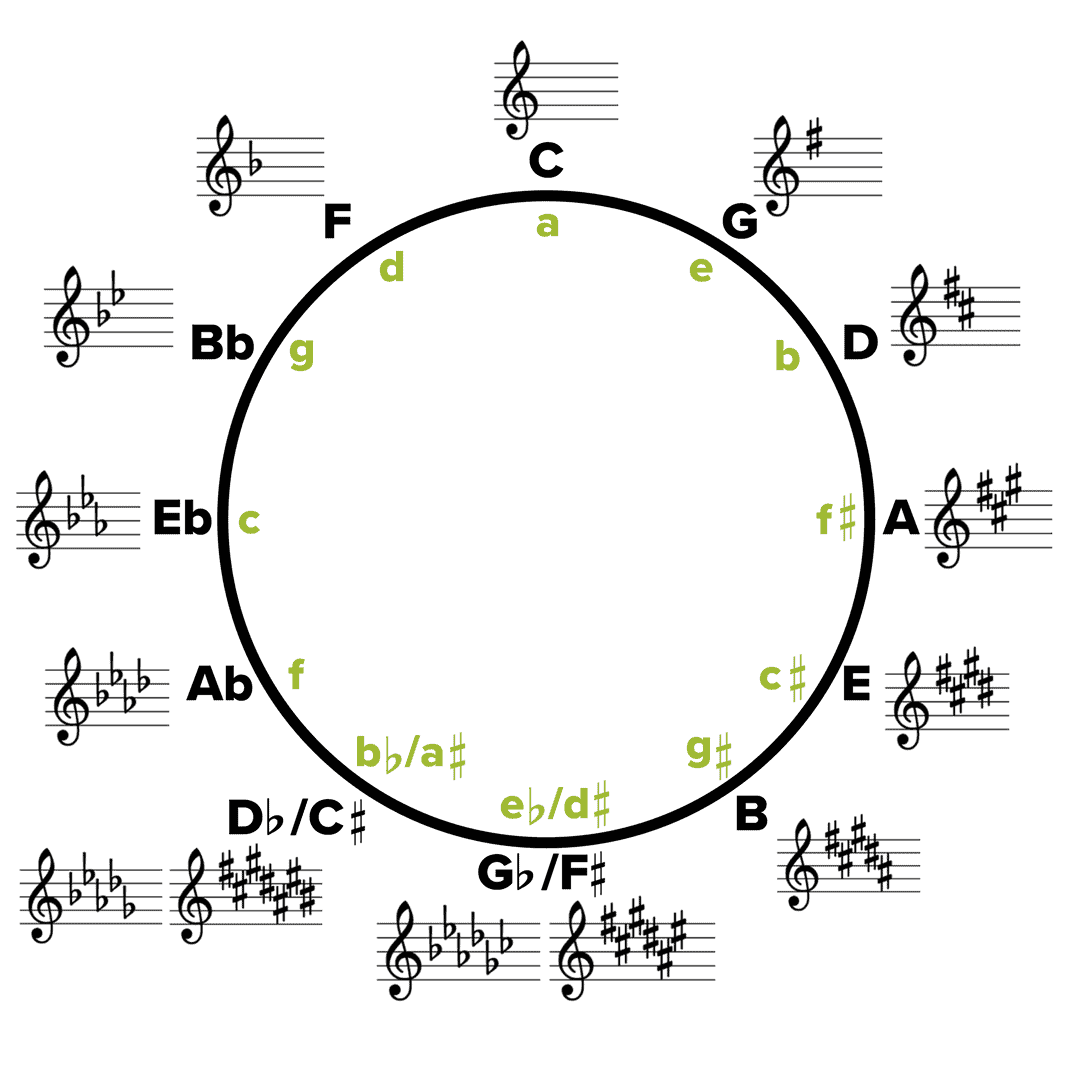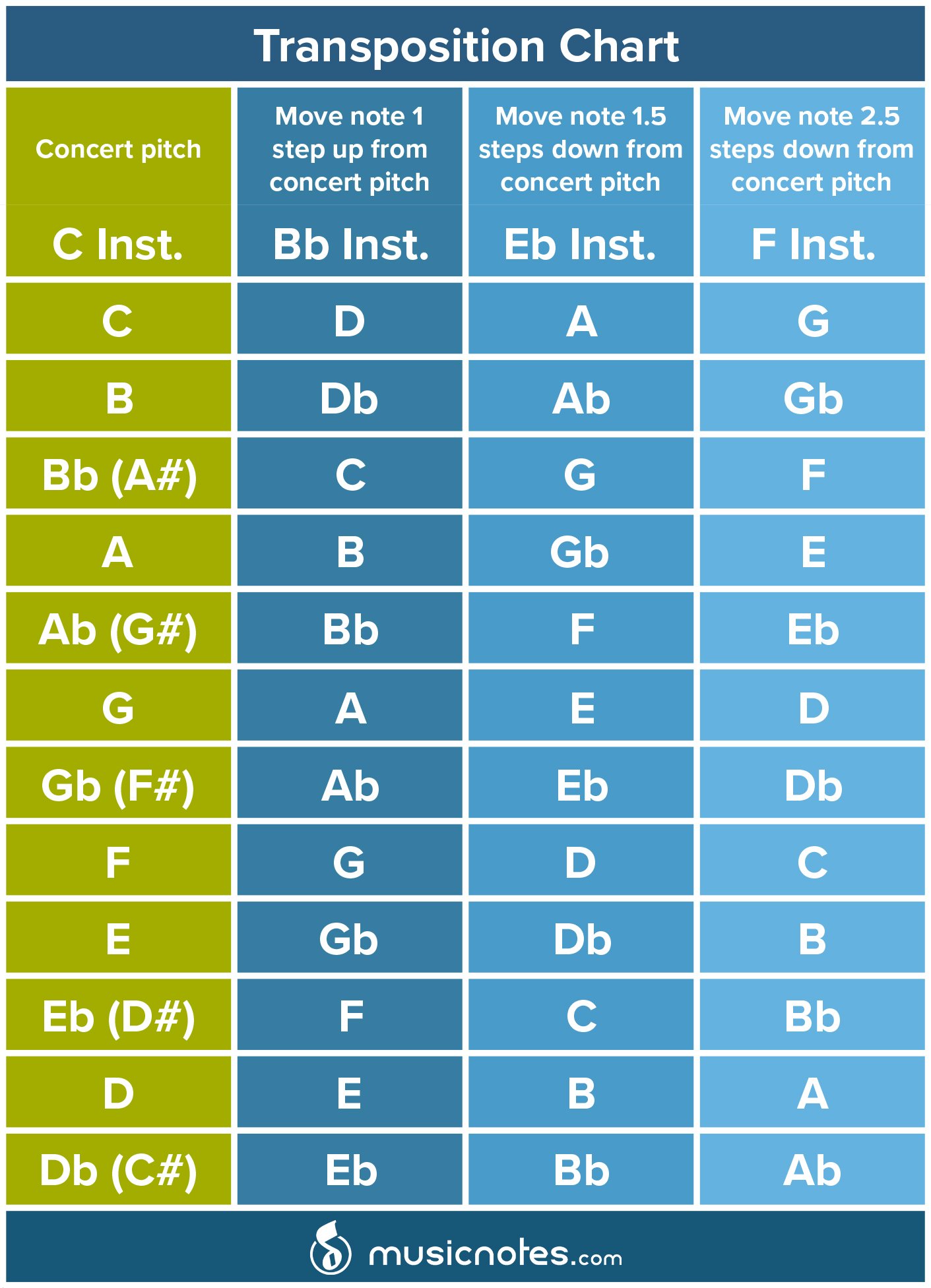Music Theory: Learn How To Transpose Music
Learning how to transpose music will help you better understand the theory behind what creates all those emotive, provoking sounds of a song. This article is here to help you!

Many musicians already know how easy it is to transpose Musicnotes sheet music into any key they want with a simple click of a mouse. However, if you’re playing from a non-digital file, or as a beginner musician, it’s important to know the process of changing the key of a piece of music. Learning how to transpose music will help you better understand the theory behind what creates all those emotive, provoking sounds of a song.
Why Do We Need Transpositions?
Sometimes we’ll need to transpose music so that it can properly be played on different instruments. Any major key can be transposed into any other major key, and the same goes for minor keys. Because of the physical properties of certain instruments, it’s easier to transpose and read sheet music for them in a different key rather than read them in concert pitch (like a piano). Other times, we’ll decide to transpose the key of a piece to make it simpler to play or in a more comfortable range to sing. The basic process of transposition is the same for either use.
The Circle of Fifths
The Circle of Fifths provides an at-a-glance look at key signatures based on the number of sharps or flats.

Example:
Say you have a piece of sheet music written for a flute (a C instrument/concert pitch instrument) and you need to play it on the clarinet (a B-flat instrument/transposition instrument).
- A C pitch played on the flute or piano will actually sound like a C because they are concert pitch instruments. Remember the line “if it sees a C, it sounds its key.”
- However, if you play that same pitch of C on your clarinet, that C actually will sound like a B-flat in concert pitch because the clarinet is a transposing instrument.
- In order for that piece to sound the same on a flute and clarinet, we’ll need to transpose each of the notes by the correct interval (the distance between the notes).
Transposition Chart
Now that we’ve pinpointed our original key signature, we can identify how far up or down in tone we’ll need to transpose for our new instrument to sound the same as our original concert pitch. Below is a handy guide and two examples that show how many steps (or half steps) we must move each note from our original score to our new, transposed score.

Example: Transposing from a C instrument to a B-flat instrument.
-
- Move the key up one whole step (or whole tone).
- Our key of C Major transposes to a key of D Major. Likewise, G Major would transpose to A Major, B-flat Major to C Major, and so on.
You may also use this chart as a guide when transposing individual notes on your sheet music.
Example: Transposing a melody to alto saxophone (an E-flat instrument).
- Your concert-pitch melody is scored in the key of A-flat Major.
- You’ll need to move down 1.5 steps to transpose your piece for an E-flat instrument, thus your new key is F Major.
- If you need help counting out the steps, following the whole and half steps on a keyboard can be helpful. Print out our piano guide cheat sheet to visualize whole and half steps between notes.
Note that a pitch may sound an octave lower or higher than the original depending on your instrument and you also may find you’ll need to change clefs. There’s more detailed information on that here. Starting out, however, just focus on transposing in the clef you’re most comfortable reading.
Transposing Range
A vocalist looking to transpose in order to change the range of a piece can simply follow the same process of determining the original key, deciding on new key, and moving each note the same number of steps and half steps throughout the piece. In this situation, the notes you read will be the actual concert pitch. Just remember to transpose any accompaniment in the same way.
Take a look at the Singer Pro arrangement of “Let It Go,” as an example.
- Listen to the original song in the key of F Minor (4 flats).
- Now, choose the G Minor transposition available on the right-hand side of the product page.
- Listen to the song in G Minor and notice how the pitch of the song in G Minor, which is 1 whole step higher than F Minor, sounds higher when you listen to it.
Being able to transpose a piece in this way allows for vocalists to find songs within a comfortable range. If you’re not sure how to determine your voice range, click here.
More Tips to Help with Transposition
1. Take a look at Musicnotes’ free downloads of the month, print each arrangement, look at the key signatures, and see how they relate to one another. Use the Circle of Fifths to familiarize yourself with the keys and the transposition chart to see how many steps (or half steps) the key moves depending on the instrument.
2. Print your free manuscript paper, and start transcribing your piece moving each note the same interval, or the number of steps and half-steps, as your key. Again, you can use the chart above if you get stuck. Don’t forget that accidentals must also be transposed by the same interval. For example, if you see an A-flat in your concert score as an accidental, a B-flat instrument would need to see a B-flat to sound the correct concert pitch.
3. The easiest way to go about transposing is to fill in your new key signature, your time signature (which will not change at all), and write out every note paying close attention to the interval between your original notes and transposed notes, plus the intervals between the notes in the individual measures. Remember to update any changes in key signature within the piece (use your handy chart). When you’ve completed your transposition, all that’s left to do is mark in the upper left-hand corner with what instrument your transposition is for. In our examples above, we’d write “Clarinet in Bb” or “Alto Saxophone in Eb.” Of course, you can do all of this digitally now if you choose, but the manual process will help you truly understand transposition in your early stages of learning.
Just like with most music theory, the best way to master transposition is to practice it. You’ll find that not only with this help you improve your transposition skills, key your signature memorization and sight reading abilities will grow by leaps and bounds!


